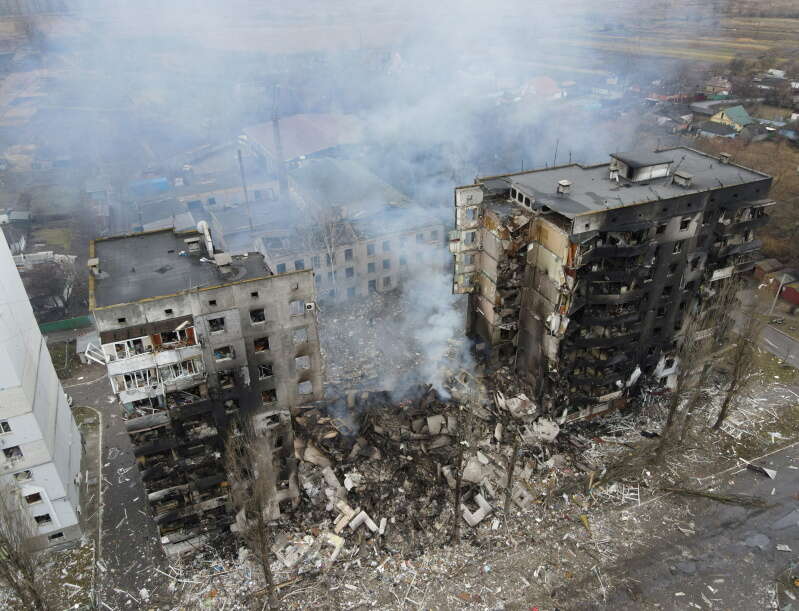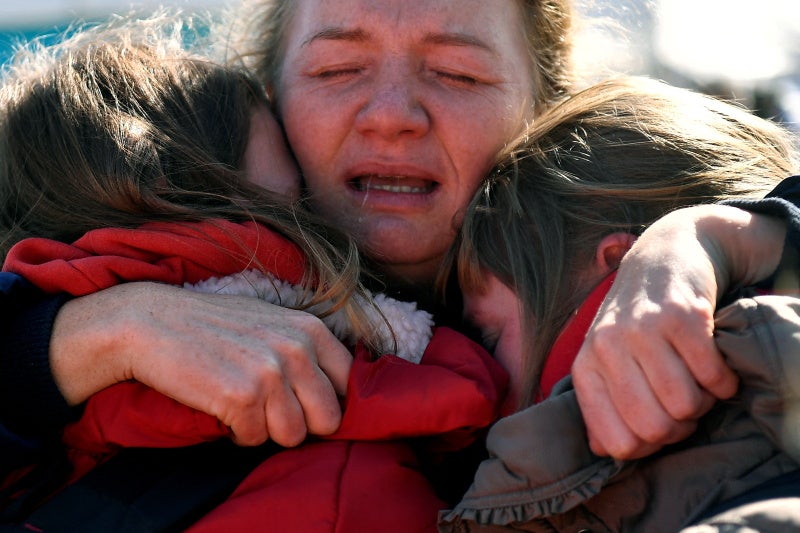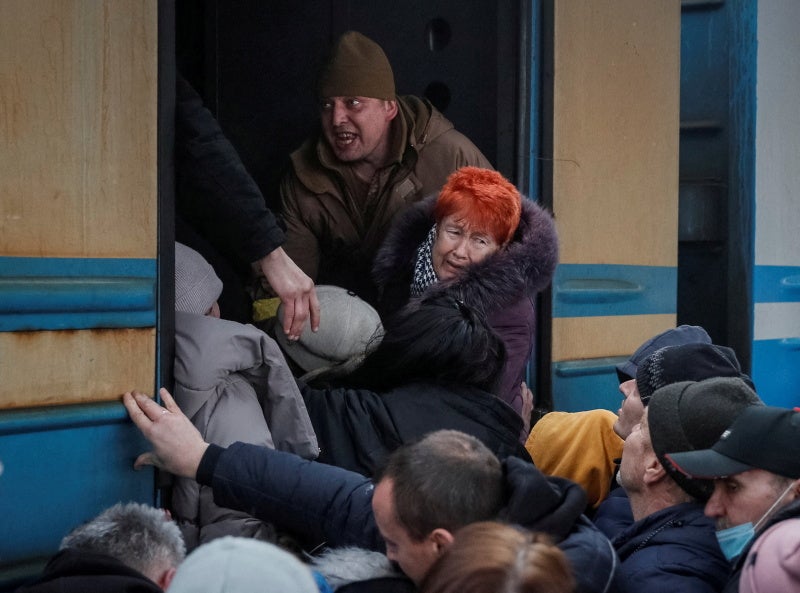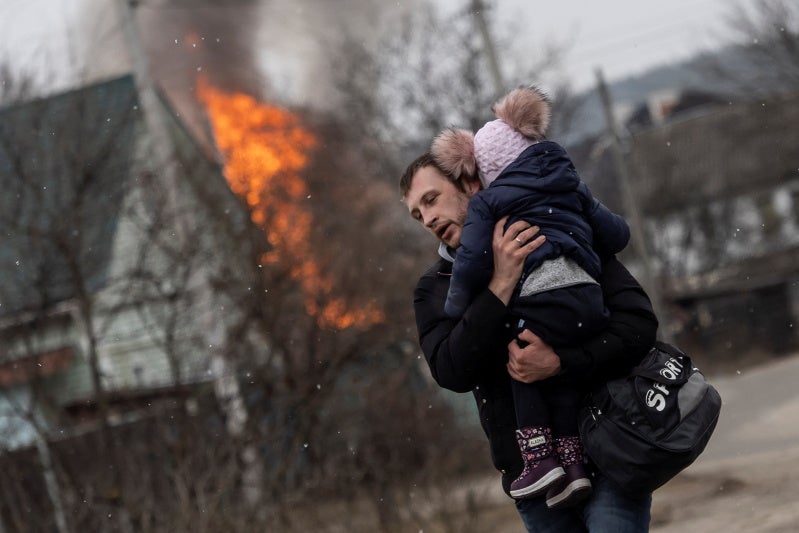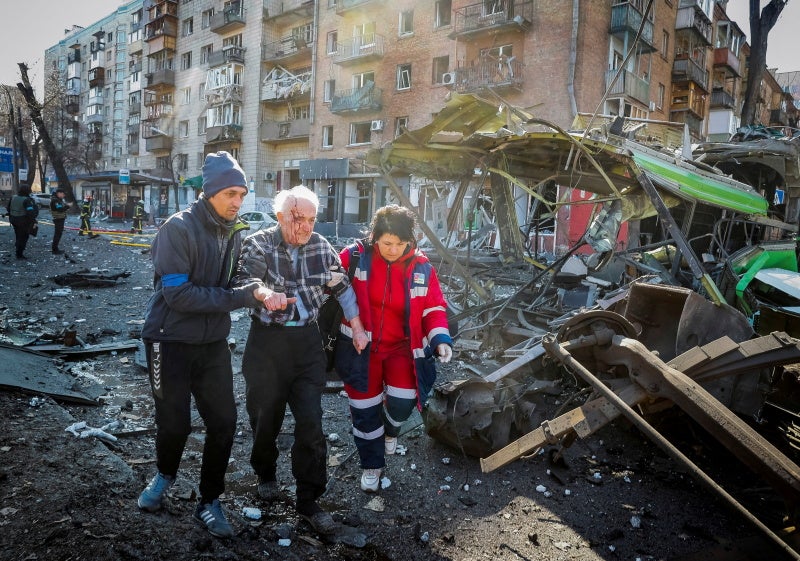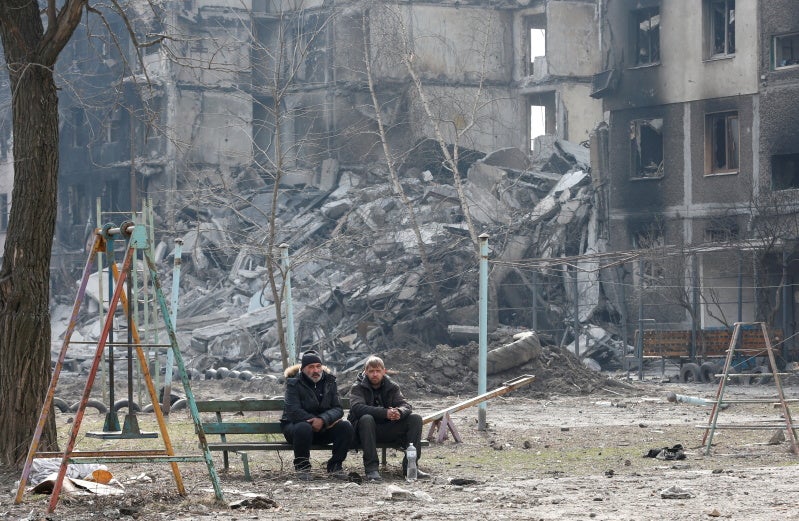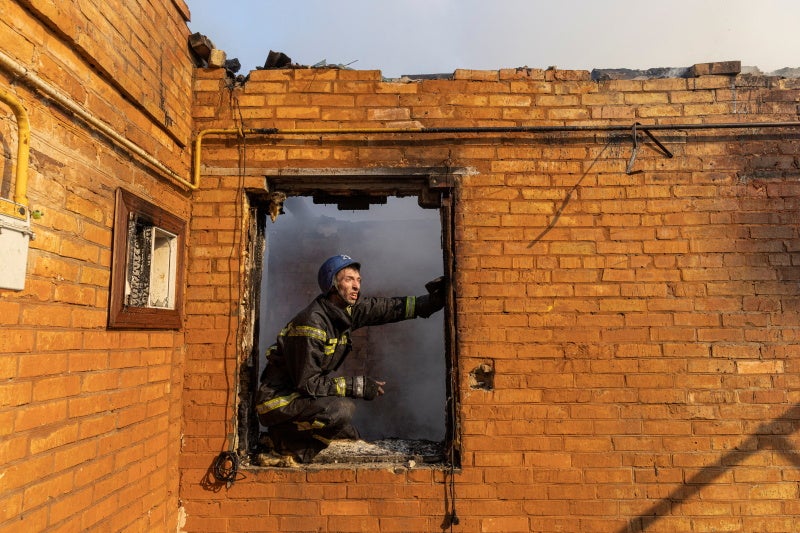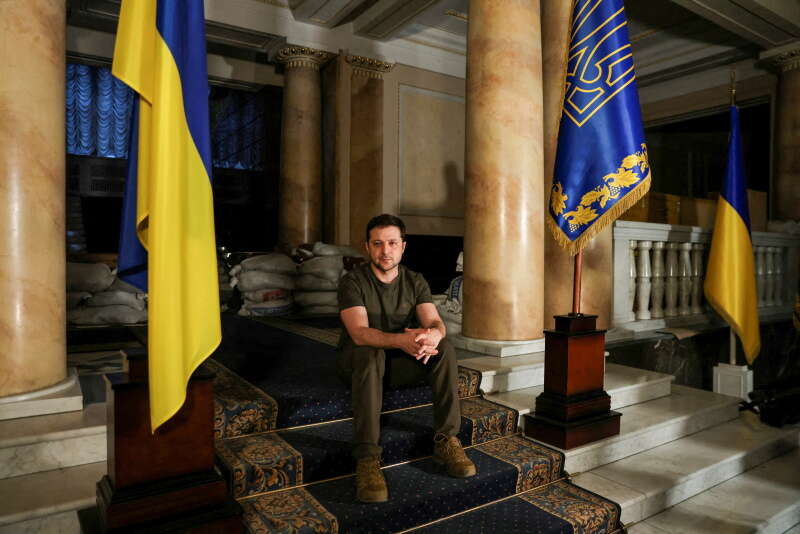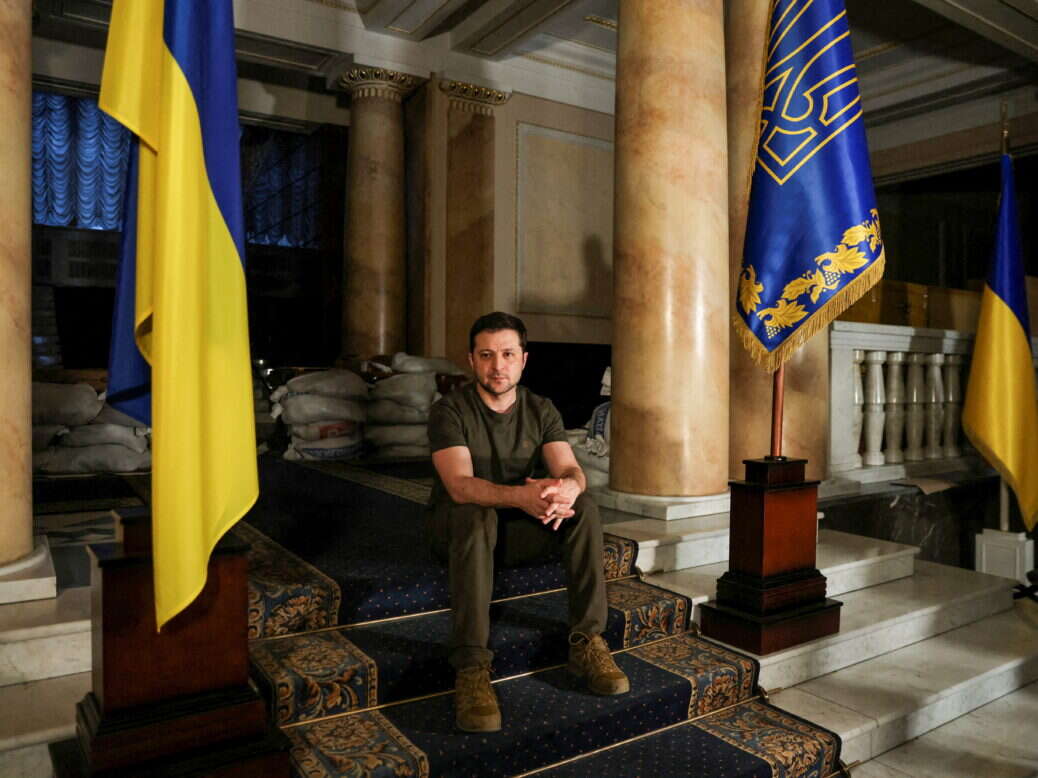
International news agency Reuters’ extensive on the ground coverage from Ukraine has seen record-breaking use of its pictures and video content by publishers and TV stations around the world.
Reuters said it had its biggest month ever for client use of its video content in March, with more than 4.5 million uses on TV across the world.
Its previous records had been 3.6 million the month before, when Russia began its invasion of Ukraine on 24 February, and 3.6 million in March 2020 as the Covid-19 pandemic swept across the world.
The first day of the invasion saw the highest number of downloads of Reuters pictures in a single day (scroll down to see some of the most-downloaded images), while social media video views for Reuters content were at one of its highest levels ever for a running story.
Fifty Reuters clients collectively saw 2.84 billion video views on their social channels from its Ukraine content in the first three months of the year. In March alone Reuters content saw about 1 billion social media video views.
Among the most-used videos were clips showing military vehicles on the outskirts of the eastern city of Donetsk, two of residential buildings wrecked in Kyiv, and one of fierce fighting between Ukrainian and Russian forces in Kharkiv.
The Reuters website saw user traffic up 30% month-on-month in March, which came after an “already remarkable” month as February saw the onset of war.
Reuters has had dozens of staff at any one time on the ground in Ukraine since the invasion began, including journalists, security staff, translators and drivers – a “very big operation to coordinate” according to Simon Robinson, global managing editor of news publishing.
Robinson told Press Gazette he had heard of concerns in some circles that “media outlets look only at Ukraine or at a war in Europe”, giving less attention to other global conflicts and struggles – for example to Afghanistan, where the Taliban is continuing to tighten its control on elements of what used to be normal life.
United Nations secretary general António Guterres warned last month there was “clear evidence” the Ukraine conflict was “draining resources and attention from other trouble-spots in desperate need”.
However Robinson said Reuters would ensure it continues to cover pressing stories from elsewhere around the globe.
“I think there’s rightly a lot of awareness in journalistic circles that, well, you know, there’s so much attention on Ukraine but what about other places in the world like Yemen, like Ethiopia and we’ll certainly stay focused on Ethiopia as well,” he said.
“We have different kinds of stories in the works there… I know that we cover lots of different parts of the world and we are very conscious of making sure that our coverage all remains global.”
As such a large frontline news organisation, Reuters has decades of experience operating in conflict zones and has therefore built up a “very strong safety and security apparatus”. There are in particular three people who coordinate the safety side of things, including an editor and a recent hire who is both a former British Army soldier and photographer.
Robinson said: “That’s all very well and good in a theoretical way, you make all the preparations that you can and then of course when something like this happens it’s just a question of making sure that we make all the right decisions as we go along… we’re obviously informed by the coverage that we want to do but we’re making decisions based on the facts on the ground in terms of security as well.
“So I think that it’s always challenging, but I do think that we at least have the best structure and set up in place to handle a situation like this.”
Nonetheless tragedies do happen: Last year Reuters photojournalist Danish Siddiqui was killed as the Taliban retook Afghanistan, while photographer Namir Noor-Eldeen and his assistant and driver Saeed Chmagh were among a group of Iraqis gunned down by the US military in Baghdad in 2007.
At least seven journalists have been killed while working in Ukraine so far, including Maks Levin, a well-known Ukrainian photojournalist who had been a regular contributor for Reuters since 2013.
Although he was not formally on assignment for Reuters at the time of his death, one of his drone photos capturing the wreckage of Borodyanka in the Kyiv region (below) is one of the agency’s most-downloaded of the conflict so far.
Robinson described Levin as an “incredibly brave” photographer who had done a huge amount of work for Reuters in the Donbas region of Ukraine where war began in 2014.
“He had documented in an incredible way actually what had been happening to his country over the last, kind of, nearly decade,” Robinson said. “So everyone here is really, really sad about the loss of Maks. It’s a big loss to the world of journalism, definitely.”
There have been no other specific incidents in which Reuters journalists were put in immediate danger so far in the Ukraine war, although Robinson said the most worrying period was when it looked like Kyiv may be put under siege with people unable to enter or leave. He said: “We were definitely very focused on making decisions that would protect our people.”
Although Ukraine has been dubbed the first Tiktok war, largely due to the prevalence of Ukrainians posting their own video on social media, Robinson said one of the main things that he felt set it apart from previous conflicts of the past 20 years was a lack of video footage of Ukrainians and Russians actually engaging in fighting.
Robinson, who has worked for Reuters for 12 years but previously spent time embedded with US forces in Iraq for Time magazine, said this may be because Ukrainian forces have not embedded journalists with them to the same extent.
“So they’re [journalists] just not there,” he said of the frontline fighting. “Which means that if they get close at all to where the frontline is, it tends to be under their own steam and it is harder to get in and then we know that in some cases, they kind of get kept away by the Ukrainians,” he said. Sky News correspondent Sally Lockwood previously revealed how the situation had become “very delicate” amid a new Ukrainian law banning real-time reporting on certain operational aspects of the war.
Robinson added: “And then also there are very few journalists, at least certainly not non-Russian journalists, who have access to the other side at all.”
Russia has introduced new anti-“fake news” laws since the conflict started, criminalising the dissemination of “false information” about the Russian military with the threat of up to 15 years in prison. Numerous foreign outlets suspended their reporting from Russia to protect their journalists but Reuters continues to have a presence in the country.
Robinson said: “The safety of our staff is paramount and we will continue to cover Russia in a robust and accurate and comprehensive way. Which is only right, but yes, operating in Russia at the moment is challenging.”
Asked why having such a major presence on the ground was so important for Reuters, Robinson said: “I think that our contract in some ways with our clients around the world is that we will provide news in real-time as it happens and this is, so far this year anyway, the major story of the year so there’s an expectation there – and also, beyond that, we want to be there on the ground in places like Bucha to bear witness to what’s happening, to tell the world what has happened in an impartial, unbiased and independent way and I think that we take that mission really, really seriously and it drives what we do.”
He added: “It’s a huge economic story as much as it is a conflict story. I think the lesson for us really is that when something like this happens, and when there’s a massive news story, people want to know the facts and they come to Reuters because we’re very fact-based, we go about our business in a very unbiased way, and we verify everything.
“I think there’s huge value in that, in some ways, old fashioned journalistic approach, especially on a story like this.”
A selection of the most-downloaded Reuters images of the Ukraine war so far:
Picture: Reuters/Umit Bektas
Email pged@pressgazette.co.uk to point out mistakes, provide story tips or send in a letter for publication on our "Letters Page" blog

